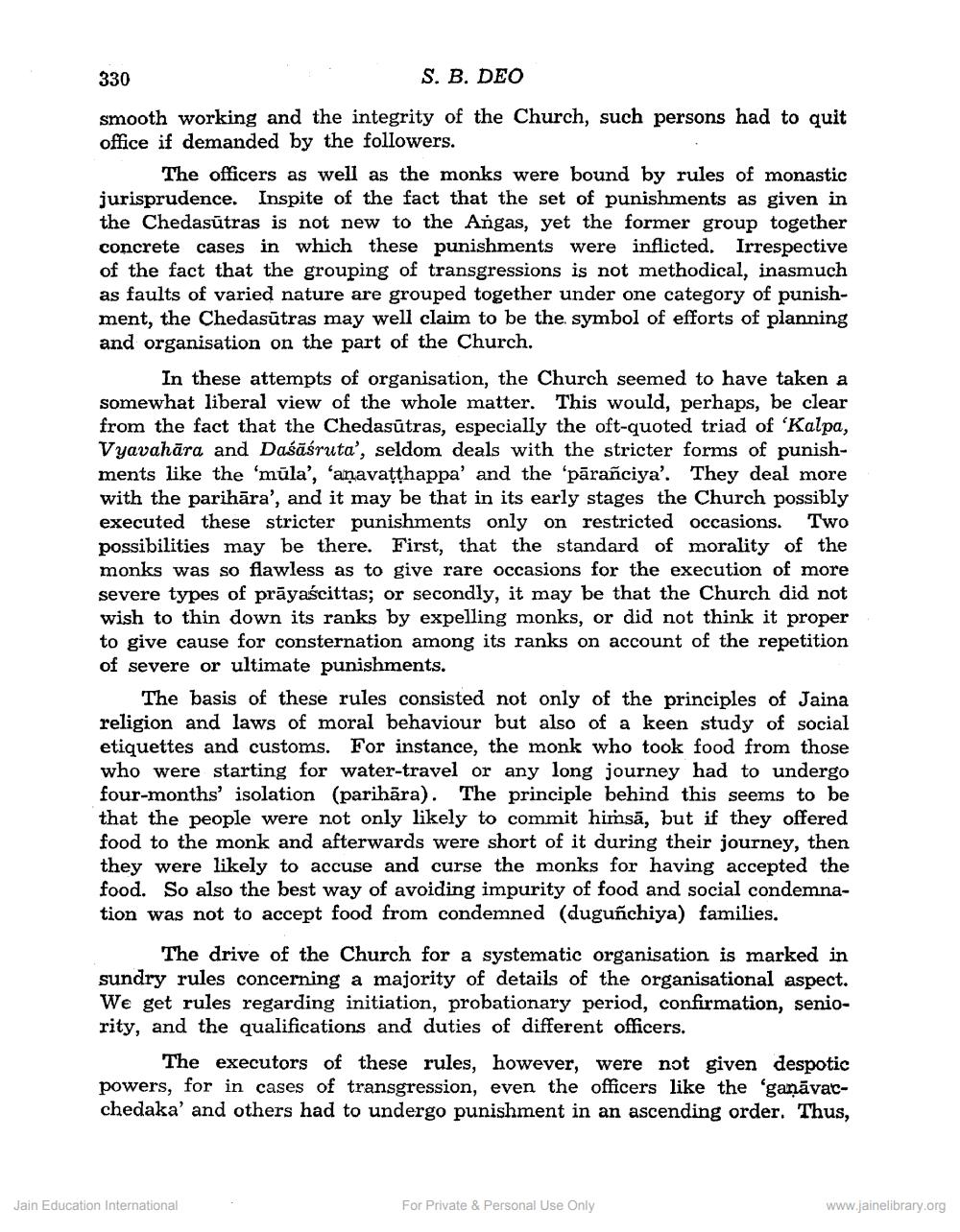________________
330
S. B. DEO
smooth working and the integrity of the Church, such persons had to quit office if demanded by the followers.
The officers as well as the monks were bound by rules of monastic jurisprudence. Inspite of the fact that the set of punishments as given in the Chedasūtras is not new to the Angas, yet the former group together concrete cases in which these punishments were inflicted. Irrespective of the fact that the grouping of transgressions is not methodical, inasmuch as faults of varied nature are grouped together under one category of punishment, the Chedasūtras may well claim to be the symbol of efforts of planning and organisation on the part of the Church.
In these attempts of organisation, the Church seemed to have taken a somewhat liberal view of the whole matter. This would, perhaps, be clear from the fact that the Chedasūtras, especially the oft-quoted triad of 'Kalpa, Vyavahāra and Daśāśruta', seldom deals with the stricter forms of punishments like the 'mula', 'anavatthappa' and the 'pārañciya'. They deal more with the parihāra', and it may be that in its early stages the Church possibly executed these stricter punishments only on restricted occasions. Two possibilities may be there. First, that the standard of morality of the monks was so flawless as to give rare occasions for the execution of more severe types of prāyaścittas; or secondly, it may be that the Church did not wish to thin down its ranks by expelling monks, or did not think it proper to give cause for consternation among its ranks on account of the repetition of severe or ultimate punishments.
The basis of these rules consisted not only of the principles of Jaina religion and laws of moral behaviour but also of a keen study of social etiquettes and customs. For instance, the monk who took food from those who were starting for water-travel or any long journey had to undergo four-months' isolation (parihāra). The principle behind this seems to be that the people were not only likely to commit himsā, but if they offered food to the monk and afterwards were short of it during their journey, then they were likely to accuse and curse the monks for having accepted the food. So also the best way of avoiding impurity of food and social condemnation was not to accept food from condemned (duguñchiya) families.
The drive of the Church for a systematic organisation is marked in sundry rules concerning a majority of details of the organisational aspect. We get rules regarding initiation, probationary period, confirmation, seniority, and the qualifications and duties of different officers.
The executors of these rules, however, were not given despotic powers, for in cases of transgression, even the officers like the 'ganāvacchedaka' and others had to undergo punishment in an ascending order. Thus,
Jain Education International
For Private & Personal Use Only
www.jainelibrary.org




